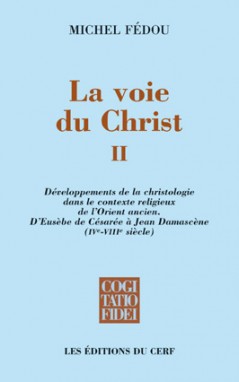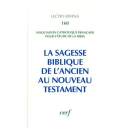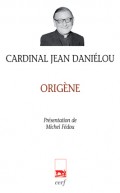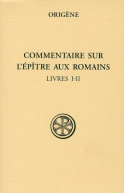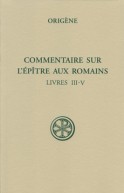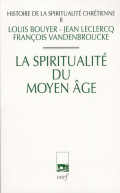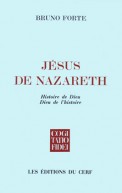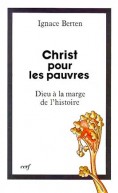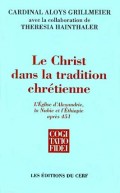La Voie du Christ II - CF 288
de Michel Fédou
Collection Cogitatio Fidei - N° 288
672 pages - mai 2013
45,00€
Entre le IVe et le VIIIe siècle, certaines doctrines reconnues comme hétérodoxes portaient la marque d’influences philosophiques extérieures à la tradition chrétienne (ainsi l’arianisme d’Eunome) ; là où les débats christologiques paraissaient purement intra-ecclésiaux, ils n’en conservaient pas moins une grande portée pour la compréhension de l’originalité de la foi chrétienne par rapport à d’autres traditions. Surtout, si importants qu’ils aient été entre des auteurs qui se voulaient tous chrétiens (qu’ils fussent fidèles à Nicée ou partisans d’Arius, chalcédoniens ou membres d’une Église nestorienne ou monophysite), ces débats ne doivent pas faire oublier les situations dans lesquelles le christianisme a été, dans la seconde moitié de l’époque patristique, directement confronté à des traditions religieuses anciennes ou nouvelles — depuis le judaïsme et les courants issus du monde gréco-romain jusqu’à l’islam, sans oublier les sagesses ou religions de la Chine que découvrirent, vers la fin de cette époque, des missionnaires nestoriens venus de Perse. Tel est le contexte — aussi vaste que l’Orient alors connu — dans lequel les chrétiens des IVe-VIIIe siècles se sont efforcés de dire la signification de la foi au Christ. L’enjeu était de rendre témoignage à cette foi dans un monde marqué par toutes sortes de croyances, de pratiques ou de traditions religieuses. Et cet enjeu demeure plus actuel que jamais.
--
Between the 4th and 8th centuries, certain doctrines recognised as being heterodox showed philosophic influences from outside the Christian tradition (such as the Arianism of Eunomius). Yet where Christological debate appears to be purely intra-ecclesial, they nevertheless conserve a wide understanding of the originality of the Christian faith compared with other traditions. Moreover, important as they may have been to authors who claimed to be Christians (whether faithful to Nicaea or supporters of Arius, Chalcedonians or members of a Nestorian or Monophysite Church), their debates should not let us forget the situations which Christianity, in the second half of the Patristic period, had to confront: ancient and new religious traditions - from Judaism and the currents emanating from the Greco-Roman world to Islam - not forgetting the wisdoms or religions from China, discovered by Nestorian missionaries from Persia at the end of that period. This is the context – as vast as the Orient as it was then known – in which Christians of the 4th-8th centuries strove to disseminate the meaning of faith in Christ. The challenge was to bear witness to their faith in a world where all sorts of beliefs, practices and religious traditions held sway… a challenge that has lost none of its modernity.
--
Between the 4th and 8th centuries, certain doctrines recognised as being heterodox showed philosophic influences from outside the Christian tradition (such as the Arianism of Eunomius). Yet where Christological debate appears to be purely intra-ecclesial, they nevertheless conserve a wide understanding of the originality of the Christian faith compared with other traditions. Moreover, important as they may have been to authors who claimed to be Christians (whether faithful to Nicaea or supporters of Arius, Chalcedonians or members of a Nestorian or Monophysite Church), their debates should not let us forget the situations which Christianity, in the second half of the Patristic period, had to confront: ancient and new religious traditions - from Judaism and the currents emanating from the Greco-Roman world to Islam - not forgetting the wisdoms or religions from China, discovered by Nestorian missionaries from Persia at the end of that period. This is the context – as vast as the Orient as it was then known – in which Christians of the 4th-8th centuries strove to disseminate the meaning of faith in Christ. The challenge was to bear witness to their faith in a world where all sorts of beliefs, practices and religious traditions held sway… a challenge that has lost none of its modernity.
- Dimensions : 135x215x32
- ISBN : 9782204097703
- Poids : 820 grammes
DU MÊME AUTEUR
> VOIR TOUS LES LIVRES DE l'AUTEUR
DANS LA CATÉGORIE
Histoire de la spiritualité chrétienne, II
La spiritualité du Moyen Âge
de Louis Bouyer ,Dom Jean Leclercq ,François Vandenbroucke
720 pages - sept. 2011

